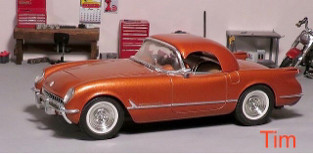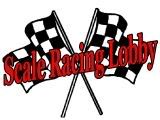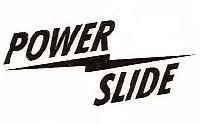Post by wisdonm on Feb 26, 2011 12:07:56 GMT -5
This is my interpretation of what an Aerovette rally car would have looked like. I made up this little story to go with it:
This is a secret rally car that, as GM wished, has all but been forgotten. Bill Mitchell, Corvette styling chief, wanted to celebrate the Corvette 25th anniversary and the introduction of the new rear engine design in a way that would get European attention. Seeing a resemblance between the proposed 1980 Aerovette and the all-concurring Lancia Stratos, Mitchell decided to campaign the Aerovette in international Group 4 rallying.
In order to sell the program to GM he told them it was an opportunity to test the rear engine layout, Kevlar construction, Delco Electronic's new digital dash and navigation systems, and a 5-speed manual trans-axel with torque converter. Although, GM had to make 500 copies by January of 1979, there were enough Corvette fans and collectors that were willing to buy anything.
The Kevlar chassis and running gear were designed and produced at the GM skunk works, once again, the development and actual racing was farmed out to Jim Hall's Team Chaparral. Practically hidden, in Midland Texas, they had use of Hall's private Rattlesnake Raceway and Can-Am/Trans-Am/Indy Car shops and experience. The car was painted in the two-tone colors, silver and charcoal, of the 25th anniversary Corvette and sponsored by Coor's Brewery's new 1978 product, Coor's Light. This car was the first Coor's "silver bullet". It weighed 1,850 lbs (Kevlar instead of fiberglass, aluminum instead of steel) and had a Watkins Glen spec 358 cubic inch NASCAR motor with aluminum block, heads, and trans-axel case. With power and torque to spare, it was felt, the ease of driving with a torque converter made up for any loss in power.
Hall tried to hire the best American rally driver at the time, John Buffum. When John saw pictures of the car, he said, "That blimp will never fit on a logging trail". Then he signed with British Leyland to drive their TR-7. During a chance meeting at a CART race, A. J. Foyt told Hall about a young driver that was tearing up dirt tracks in sprint cars. Hall sent for him to come and try the Aerovette. The driver's name was Steve Kinser. He was 23. Steve had never seen a rally car before, much less driven one. So he didn't know it wasn't supposed to work. He knew it was a semi-factory ride, so he signed on to test and run the 1978 International Rally season.
The last piece of the puzzle was Erin, daughter of Penske's master timer and scorer, Judy Stropus. Erin was making a name for herself and moving up the ranks in SCCA Pro Rallying. She signed on as navigator. The car's racing debute was to be the 1977 SCCA Press on Regardless rally Nov. 5-6 in Houghton, Michigan. Unfortunately, the car was totaled during a practice run on mining roads around Midland.
The FIA was letting it be known that soon the top rally division would allow four-wheel drive. Although GM had 4WD experience with the CRV I and II, it was never going to develop a 4WD Corvette. The Aerovette Ralley program sadly died before it's first rally. Fortunately for Kinser, Coors decided to use the rally car budget to sponsor Kinser's 1978 season in the newly formed World of Outlaws sprint car series. And a star was born.






This is a secret rally car that, as GM wished, has all but been forgotten. Bill Mitchell, Corvette styling chief, wanted to celebrate the Corvette 25th anniversary and the introduction of the new rear engine design in a way that would get European attention. Seeing a resemblance between the proposed 1980 Aerovette and the all-concurring Lancia Stratos, Mitchell decided to campaign the Aerovette in international Group 4 rallying.
In order to sell the program to GM he told them it was an opportunity to test the rear engine layout, Kevlar construction, Delco Electronic's new digital dash and navigation systems, and a 5-speed manual trans-axel with torque converter. Although, GM had to make 500 copies by January of 1979, there were enough Corvette fans and collectors that were willing to buy anything.
The Kevlar chassis and running gear were designed and produced at the GM skunk works, once again, the development and actual racing was farmed out to Jim Hall's Team Chaparral. Practically hidden, in Midland Texas, they had use of Hall's private Rattlesnake Raceway and Can-Am/Trans-Am/Indy Car shops and experience. The car was painted in the two-tone colors, silver and charcoal, of the 25th anniversary Corvette and sponsored by Coor's Brewery's new 1978 product, Coor's Light. This car was the first Coor's "silver bullet". It weighed 1,850 lbs (Kevlar instead of fiberglass, aluminum instead of steel) and had a Watkins Glen spec 358 cubic inch NASCAR motor with aluminum block, heads, and trans-axel case. With power and torque to spare, it was felt, the ease of driving with a torque converter made up for any loss in power.
Hall tried to hire the best American rally driver at the time, John Buffum. When John saw pictures of the car, he said, "That blimp will never fit on a logging trail". Then he signed with British Leyland to drive their TR-7. During a chance meeting at a CART race, A. J. Foyt told Hall about a young driver that was tearing up dirt tracks in sprint cars. Hall sent for him to come and try the Aerovette. The driver's name was Steve Kinser. He was 23. Steve had never seen a rally car before, much less driven one. So he didn't know it wasn't supposed to work. He knew it was a semi-factory ride, so he signed on to test and run the 1978 International Rally season.
The last piece of the puzzle was Erin, daughter of Penske's master timer and scorer, Judy Stropus. Erin was making a name for herself and moving up the ranks in SCCA Pro Rallying. She signed on as navigator. The car's racing debute was to be the 1977 SCCA Press on Regardless rally Nov. 5-6 in Houghton, Michigan. Unfortunately, the car was totaled during a practice run on mining roads around Midland.
The FIA was letting it be known that soon the top rally division would allow four-wheel drive. Although GM had 4WD experience with the CRV I and II, it was never going to develop a 4WD Corvette. The Aerovette Ralley program sadly died before it's first rally. Fortunately for Kinser, Coors decided to use the rally car budget to sponsor Kinser's 1978 season in the newly formed World of Outlaws sprint car series. And a star was born.




















